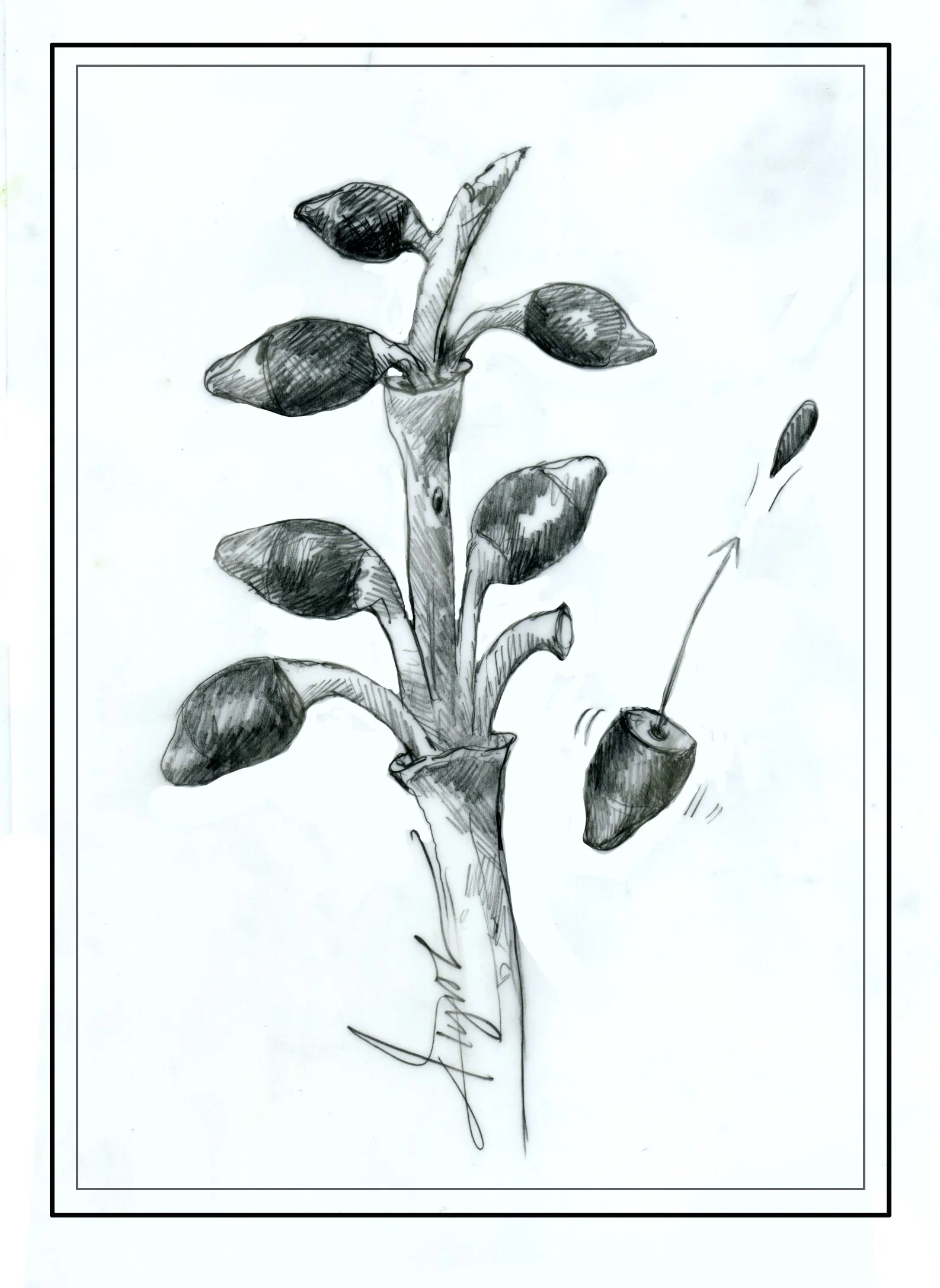The Outside Story | Eastern Dwarf Mistletoe: A bomb-bearing botanical vampire
Dec. 16, 2022 | By Kenrick VezinaHave you noticed the cheery evergreen sprig with pearly berries, currently perched over the doorways of Yankee traditionalists and those desperate to be kissed?
That’s common mistletoe, Viscum album, which one botanical dispatch from the 1800s called “perhaps the most distinguished plant in the flora of England.” It’s found in broadleaf trees across Europe and its associations with protection and fertility trace back to at least the ancient Greeks and Celtic druids.
Despite its continued cultural prominence, you won’t find common mistletoe in northeastern forests, although you will find New World analogues such as oak mistletoe and other members of the “leafy mistletoe” genus, Phoradendron, farther south.
We do, however, have eastern dwarf mistletoe, Arceuthobium pusillum, which looks nothing like its beloved cousins. Like other dwarf mistletoes in the Arceuthobium genus, our mistletoe is a short, knobby, rather fungal-looking thing that erupts from beneath the bark of conifers. Its leaves are scarcely more than scales; they don’t need to be.
All mistletoes – more than a thousand species globally, most growing in the tropics – are parasitic members of the sandalwood family. Technically, these plants are hemiparasitic, meaning they’re capable of performing photosynthesis for themselves, to varying degrees, but they all grow on (and into) other plants and leach water and nutrients from their hosts.
As you might guess from its barely-there leaves and yellowish tint, Arceuthobium pusillum is no great photosynthesizer. To drain its host, it uses a specialized root structure called a “haustorium,” from the Latin for “one who drinks.” This root fuses the vascular system of the mistletoe and its host, allowing the parasite to siphon sugars, minerals, and water.
Eastern dwarf mistletoe grows for at least two years (but potentially many more) entirely beneath the bark of its host before finally putting out external shoots in early spring. The shoots are tiny – only about a centimeter long on average – and the dwarf mistletoes are some of the smallest vascular plants on the planet.
You’re much more likely to notice dwarf mistletoe’s effects on its hosts – several conifer species, especially white spruce in our area – than the plant itself. Infected trees often develop “witches’ brooms,” clusters of chaotic, twiggy growth, that are an effect of the mistletoe interfering with the hormones that trees use to control their growth.
Another year or two after the shoots have emerged, the freeloader is ready to flower. The flowers, which come in male and female varieties, are tiny clusters of three or so petals hardly more recognizable than the leaves. After they’ve spread their pollen, male plants’ external shoots drop off. Female plants, once pollinated, develop fruit. The tiny olive-green berries take more than a year to mature, ripening the following autumn. Measuring only a few millimeters in diameter, what these berries lack in size they make up for in explosive potential.
Every berry is, in essence, a hydrostatic time bomb. As the fruit ripens, it pulls in water from the rest of the plant, slowly building internal pressure. Meanwhile, at the base of the fruit, the tissues around the seed weaken. Eventually, criticality is reached, and two things happen in rapid succession: the berry pops off the stem and, milliseconds later, the base – where the berry had been attached – ruptures, launching a seed outward and upward. This reproductive payload can reach speeds of up to 60 miles per hour and distances of more than 50 feet. To quote tree disease expert James Worrall, writing on the website forestpathology.org, “You don't want to be taking a close look at it when it happens!”
The berry’s target is an uninfected tree of a suitable host species, or a different bough of the same tree. The seeds have a coating of sticky fluid that adheres to bark where they’ll wait until spring for the chance to germinate and wedge their way into a new victim.
Dwarf mistletoes wear down their hosts, causing dieback and inhibiting overall growth, especially if a tree becomes infected multiple times. White spruce often die within 20 years once Arceuthobium pusillum shoots appear. Infected branches are usually the last to die – more evidence of dwarf mistletoe’s disquieting ability to influence their hosts’ growth.
While common mistletoe remains a winter holiday staple, our botanical vampire may be better suited for Halloween. I certainly wouldn’t recommend hanging any of its berries over your door. Doing so would invite the famous warning from “A Christmas Story”: “You’ll shoot your eye out!”
Kenrick Vezina is a freelance writer, naturalist, and raconteur based in the Greater Boston area. The Outside Story is assigned and edited by Northern Woodlands magazine and sponsored by the Wellborn Ecology Fund of the New Hampshire Charitable Foundation.

